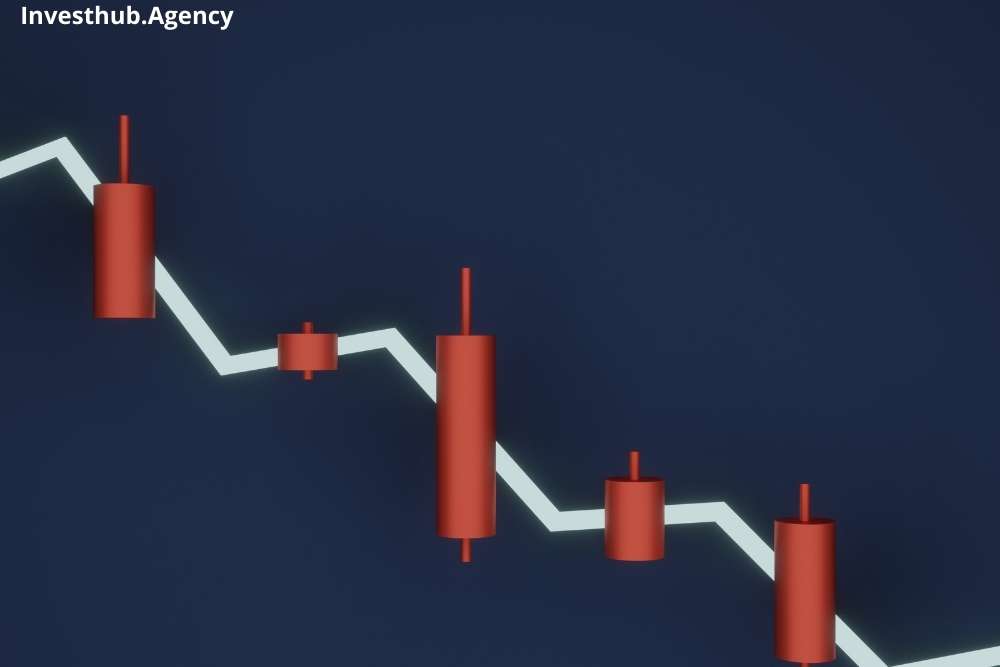Financial markets rise and decline to make money in the market; this change in the price of the assets helps the investors earn profit. They invest their funds in expectation of an excellent return which depends on the market movements. However, the trading markets are highly volatile, making it difficult for investors to analyze correctly.
Having profits requires a lot of effort, research, study, analysis, and tools for being successful traders. Investors, therefore, use advanced tools and trading strategies to predict market movements. The article focuses on one such trading strategy called short selling. A useful and attractive strategy that has supported many investors in earning good trade returns.
We’ll be exploring the concept of short selling in financial markets and how traders use these for good results. As a result, by the end of the article, readers will be equipped with short selling and its particulars that help traders make money. Although, readers should also understand that the trading strategy requires practice and understanding for the right application in financial markets.
What is Short Selling?
Short selling is a trading strategy that benefits the investor from the difference between buying and selling the traded instrument. Investors first borrow the trading asset from the market that they believe will fall in price, then the borrowed asset is sold in the market at the current market price. Then the trader buys them back at a low price; thus, completing the short selling, the investor then returns it to the original holder.
The earning of the investor is the difference between the buy and sell price of the traded instrument. It is a short-term trading style that investors can incorporate to make profits from the decline in the price of the traded assets. It could be currencies, particular stocks, cryptocurrencies, indices, etc. The strategy suits all the financial markets, although mostly applied with shorting a stock.
Traders look at the movements of the stock price and then make their trading decision. However, if the market goes in the opposite direction, that is, the price of the stock increases, then traders will face loss. Hence, it requires market understanding and knowledge for accurate use.
How does Short Selling work?
Short selling is the technique of trading where investors sell stocks or other assets that they do not own. The working of the selling short is based on borrowing shares from the broker or other financial institutions. These are then sold short in the market at the current market price of the stock. This provides them with income that they receive for short selling.
Then the short sellers close the short sale by buying back the shares in exact numbers sold in the market. After, the investor returns the shares to the lender. They then wait in the hope that the price of the stock will decline to buy back these at a lower price and earn from the difference.
Hence, to make money from short-selling, investors need to be quick to study the future changes and make money from them.
If the market turns out differently, the price of the shares or other assets turns out to rise, then the trader buys them back at a higher price, thus losing money on the investment made. However, some market investors, after the price rise, wait for the decline in the value of the traded asset. They take risks as they have to pay back the brokerage firm.
The broker issues a margin call in case of a price rise of the asset and requires the short sellers to invest more money in the trading account. Other than this, the investor has the choice of purchasing the asset or stock at its current market worth.
Why Short Selling?
When an investment has risk involved in it, traders try to avoid the strategy and go for one that has a chance of earning. Then why do investors prefer a short selling strategy?
The reason behind this involves two primary reasons; speculating and hedging. These two market terms make traders invest in the market with a short selling strategy and earn high returns. These two are discussed below individually for readers’ understanding.
Speculating
The speculators of the market identify the instruments or stock price that they believe is overpriced. After that, they decide on a short selling strategy to make a profit. Although speculating with short selling is risky still investors with good market understanding go for the trade. They can make high prices from the decline of the instruments and speculate in favorable conditions.
Hedging
A significant part of short selling is hedging; the hedgers go for this strategy to make money and have good market trade. They take small market positions to offset the risks involved from the long-term investment made. The hedgers use it to minimize the market risks, i.e., market risks or gains on the long-term investments in their trading portfolio.
The strategy of hedging is common, and traders can use it to hedge funds.
Advantages and Disadvantages of Short Selling
Short selling is a trading strategy that diversifies the portfolio and helps traders make money from their market investment strategy. Traders using short selling are called short-sellers, and they enjoy the following benefits of the strategy with some drawbacks to make the trading strategy real.
Advantages:
- Provides liquidity to the traders that reduce the price of the assets
- Liquidity improves the bid-ask spreads and assists in price discovery
- Hedging for long term investments
- Reduces market exposure
- Supports investors in diversifying the portfolio
- Helps traders in capital proceeds to overweight the portfolios long term market components
- Provides exposure to short and long term market investments
- Minimizes market volatility
- Offers risk-adjusted market returns
- Trades on price decline of assets
- Speculates on the instruments
Disadvantages:
- Trading with short selling is risky due to market volatility
- Borrowing shares or assets is difficult
- Less liquid stocks or assets are difficult to purchase and trade
- Has the risk of price increase in the market
How to Identify Short Selling Targets?
Trading with a short-selling strategy, we know, takes short market positions and does not bother to invest in long positions. Traders can borrow the instruments in the market, trade them on a price decline, and then earn money from them. But, what are the tools that traders use to identify the short selling and set the targets?
Here, we have the components that help the investors decide their targets of short selling market investments.
Fundamental Analysis
The financial aspects of the company could be helpful for traders to invest in the market and earn profit from the strategy used. Traders can check the company’s reports, balance sheets, economic data, etc., for making investments in the decline of the stock price. Short sales are not difficult when done with proper research and background study.
They can analyze all the company’s data with fundamental analysis and others for trading assets.
Read our Blog- Fundamental Analysis vs Technical analysis
Technical Analysis
Technical analysis is related to the price of the asset that helps the traders determine the price movements and whether it will rise or decline in the near future. A significant tool for the short-sellers who use the strategy to trade in the market. With the strategy, traders can know the decline in price and accordingly invest in the market.
Thematic
Thematic is another trading tool that investors can use for profitable investing. This is used for betting in the market against companies whose business models are outdated. These could pay in the long game if the market prediction on the asset is correct.
Short Selling in Stocks
Short selling is available for all the financial markets but highly preferred in stock price movements. Traders sell short on the stocks of the market to make money from the price declines. Short stock means to trade on the price falls of the stock price and manage the downside risk of the trade.
The number of shares purchased from the stock market by an investor or further lent to another market trader at a declining price. The traders then analyze this, and when they find the price will fall, they sell short in the market at the current price.
When the stock prices of stocks fall, the trader buys them back and earns the difference between current and short selling prices. Hence, making a profit from the share price. Most stock market investors use short-selling strategies to invest in shares and earn profits.
However, traders should be careful while investing as these may be profitable and risky at the same time due to the volatility of the market.
Risks of Short Selling
Short selling is a trading technique that comes with some trading risks. The strategy is based on the knowledge and understanding of the investors and could be used in a favourable way by the investors by minimizing the trading risks. The short sellers face the following risks in short selling the instruments in the market:
Unlimited Loss
The long-term investment only has a loss of the invested money, but with short selling, traders have the risk of unlimited loss. This happens when the price of the traded asset rises continuously.
Additional Trading Costs
Additional trading costs are the drawback of short selling that traders have to watch out for. When an investor goes for short selling with stocks, the trade is much more costly than the traditional investment style. Traders have to open a margin account, pay margin call, and open market position with a short stock requires margin trading. Thus, the costs are double than normal investment.
Short Interest
Traders have to pay short interest on the trading of the instruments with a short selling strategy. They have to, therefore, in advance analyse the market and discuss the short interest to be paid with brokers.
Trade Restrictions
Trading with short selling includes trade restrictions; there are authorities that regulate the trading with short selling. They decide who can short sell and when they can do so. This depends on the market conditions and economic situations of the nation.
Potential short squeeze
The short squeeze in the market is generally related to stocks when the price of the stock jumps in its value. The short sellers cut their losses by repurchasing the stocks before the price rise. This increases the shorted stock prices, forcing more short sellers to buy back stocks. Thus, increasing stock value again in the market.
Short Selling Terminologies
Short-seller uses many terminologies in their market investments that have been explained below for beginners as well as experts to have profitable investments. So, let’s explore the short sale with lower prices and understand how it helps retail investors or professionals make money.
Margin Account
A margin account is the trading account that investors have to open for trading. They can register with brokers such as PrimeFin and then use the services of the brokers to invest in the market. They have to pay some amount to open the account and pay margin calls in case of money is required by the broker.
Margin Interest
It is the interest paid by the market participants as an expense when trading on margin. These are made via the margin accounts; the interest on short trade adds up over time.
Borrowed Shares/ other assets
Investors have to trade in borrowed shares and instruments to make money. They borrow from other traders to earn a profit on the instrument and give it back after trading. They return the same security to the lender; it could be the exact number of shares or other assets, whichever they want to trade-in.
Conclusion
Trading in the financial markets requires a good understanding and practical knowledge to make quick decisions and earn profits. Short sellers invest in the market to borrow the asset and trade them in the market at a decreased price to make money. They give back the trading instrument to the lender when done with trading.
A short-term trading style that could be profitable when made accurate decisions. The trading is regulated by authorities such as the Securities and Exchange Commission or others. Thus, it provides security, but traders should be aware of the risks and minimize these for higher profits.
They can invest through brokers and open their accounts with initial investment and trade. Although, the broker should also be regulated and have the best trading services.
FAQ’s
What is short selling?
Short selling is a trading method that investors use for trading short and having profited from the price decline.
How do traders invest with short selling?
Short selling allows the investors to short sell their assets by opening a brokerage account with a margin amount and trader.
Do brokers have the facility of short selling?
Yes, investors can short sell with brokers such as Investby, ABinvesting, etc.


